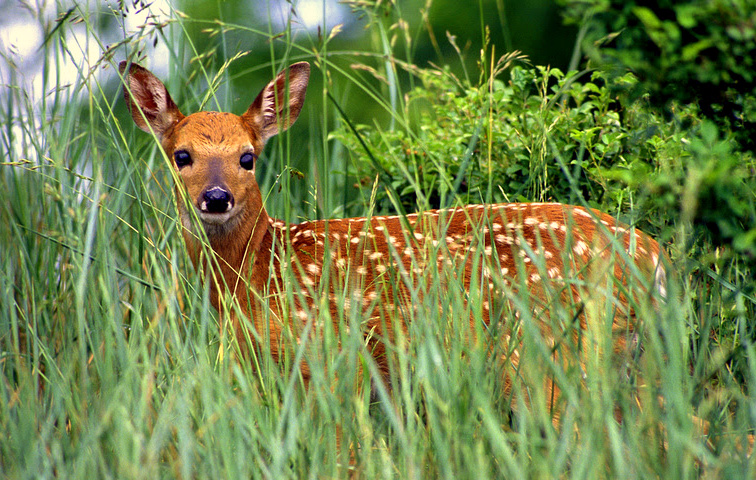
They may be cute, they may seem cuddly, but young wild animals are best left alone—for their sake as well as ours, says Tyler Evans, a wildlife biologist at the West Virginia State Wildlife Center.
Human interactions with young animals spike in the spring, and the result is rarely good.
“This season provides an excellent opportunity to observe the fawns, cubs, and other young wildlife our state has to offer,” Tyler Evans explains.
“[But] it is especially important for the public to understand the need to avoid touching or disturbing these animals, as the risks are considerable.”
Picking up wildlife, or getting too close, greatly increases the risk of harm, Evans says, and when handling animals, humans leave behind a scent that may attract a predator.
Handling can also expose humans to a parasites. “Ticks, fleas, and lice are just a few of the common threats that humans are immediately exposed to,” he said.
Zoonotic diseases are even more dangerous because they can be transmitted from animals to humans, and these include Lyme Disease, which is caused by the bite of a black-legged (“deer”) tick.
Not surprisingly, ticks are frequently encountered when handling fawns and other young animals, Evans said.
Rabies, another virus that is nearly always fatal when untreated in humans, is capable of infecting any mammal but is most commonly found in raccoons, skunks and foxes.
Each year the Division of Natural Resources receive numerous calls pertaining to fawns and other young wildlife that have been picked up by well-meaning individuals, he said.
Yet, in the vast majority of these cases, the animals weren’t in any danger until they were picked up.
Removal of a young animal from its natural environment will almost certainly lead to the death of that animal, he said.
“Young animals have special dietary needs and must obtain survival skills that only a natural setting and parent can provide,” Evans said.
Offspring often are left behind while the adult searches for food, and this separation can last for several hours. “This separation should not be mistaken for abandonment,” he said.
People often mistake a bedded fawn, without a mother in sight, as abandoned, but that is rarely the case. Hiding the fawn while the doe searches for food is an important survival tactic.
The fawn’s spotted pattern and coloration, combined with its lack of scent, affords protection and makes them difficult for predators to detect.
Evans reminds that state law prohibits the possession of wildlife without a permit, and when you pick up a young animal in the wild, you may have legally taken it into your possession.
Fines for illegal possession of wildlife range from $20 to $1,000 and may include as much as 100 days in jail.
"We want everyone to enjoy our state's wildlife," Evans said. "However, for your safety, and for that of the animal, please remember that young wildlife should always be left undisturbed and given the opportunity to remain wild.”




























